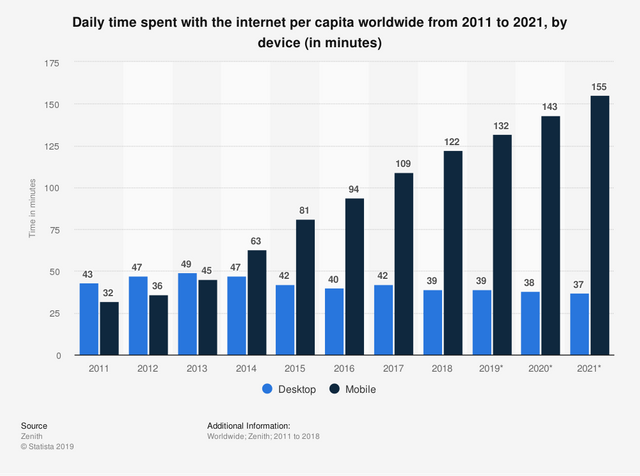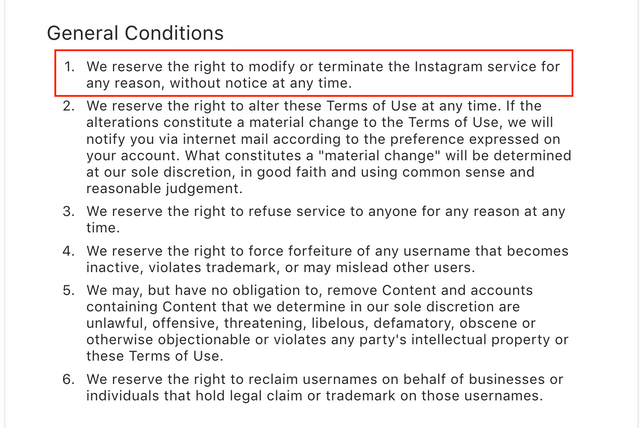At the Technical University of Munich, I am attending a blockchain seminar that focuses on the value that blockchain technology can bring to Pain Points in our everyday life.
Here you can find an example of a real-life problem where a blockchain-world could be a good solution.
What is the Pain Point?
How many hours per day do you think we spend on average on the internet?
Here you have it: in 2020 we are going to cross the barrier of the 3h per day, which is more than 45 complete days per year. That’s a lot of time, right? And this number is not going to stop increasing (Statista, 2019).

But, what do we do during this time on the internet? And how do we do it?
Well, the answer is quite simple: we spend most of the time doing transactions: crossing mails, making money transfers...and uploading all kinds of information to our social media accounts. And how do we do all of that? Thanks to our digital identities. Each day, we use them to add more and more valuable information on the internet. The result is that we are becoming dependent on these identities. And the problem is, that we are not the owners of our own digital identities.
Think about it: our Facebook, Instagram and Whatsapp accounts belong to Facebook, our Gmail account belongs to Google (and everything we upload to Google Photos, Drive, etc.). And the big issue of not having the control of our online identities is that we can lose access to them. In fact, our identifiers and all the content in our accounts can be disabled at any time at the discretion of the identity provider. This way, all the value associated with our digital identity can disappear: we may have spent years cultivating digital identities that are now impossible to replace and suddenly lose them.
You just have to take a look at Instagram terms of Use, for example, to see that they have sovereignty over our profiles (Instagram, 2020):

Instagram terms of use, 2020.
Moreover, we do not only lose our digital identities if the providers decide to erase our accounts: we can also lose a lot of valuable information when we change our laptop or our phone. In fact, portability is another very big issue linked to our digital identities. For example, if we change an iPhone for an Android phone or vice versa, as each provider has it’s own cloud services and the data is held in closed silos, it is very difficult to maintain access to all your information (Whatsapp messages, etc.).
When you add to that the fact that these centralized identity providers are susceptible to be hacked because of the attractive value of the centralized store of identities, and that they have access to unencrypted copies of our data, it becomes clear that it is important to find a solution to this.
And now the question is:
How could this Pain Point be reduced or eliminated in a blockchain-world?
Imagine having a single digital identity, which you have all the control. You can choose the data you store on it and which of it is public and which is private (for example your photos and conversations). You also know that no one can access your data without your authorization, that you will never lose access to it, and that you can make transactions with your digital identity knowing that everything is completely secure. Sounds good, right?
In a blockchain world, we can create a Self-sovereign identity, providing individual control, security, and full portability.
For identities to be truly self-sovereign, this infrastructure needs to reside in an environment of diffuse trust, not belonging to or controlled by any single organization, and distributed ledger technology (DLT) is the breakthrough that makes this possible. (Sovrin Foundation, 2017).
Distributed ledgers are typically split into two types—“public” and “private”—each with benefits and drawbacks.
One of the main advantages of using a “permissionless” ledger (such as those used by Bitcoin and Ethereum) to create our Self-Sovereign Identities is that no intermediaries are required for the execution of transactions or for the keeping of registers. But, on the other hand, it is very difficult to control that no false identities are created, as anyone can join the network without supervision, and private transactions are not possible, and this limits a lot what we could do with our digital identity.
Furthermore, in a private ledger, the information about transactions is not publicly viewable. But, a private Blockchain can only be accessed upon invitation and it is managed by a network administrator, and this contradicts the basic idea of decentralization.
Though, a hybrid model—a “public permissioned” ledger—could deliver the best of both worlds; public access and trusted governance. But, if we use a “public permissioned” ledger a new question arises: Who gives this permission, and how will this governance work? This and other subjects related to it will be discussed in a Paper about Self-Sovereign Identities and Blockchain that I will release soon.
As there are a lot of questions to be answered yet thereon, it is too early to know exactly what the relationship between digital identities and blockchain technology will be. But, in any case, I am quite sure that in the future we will have a Self-Sovereign Digital Identity based on Distributed Ledger Technology.
Thanks to Pascal Mehrwald (@pascalmehrwald), Benjamin Pabst von Ohain (@benpvo), Prof. Dr. Isabell M. Welpe and the TUM seminar participants.